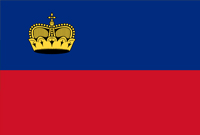New Zealand
Study in Newzealand
New Zealand, although it is the same size as Japan or Great Britain, has a lot of reasons why you should consider going there for your studies abroad. Many people will call the natives of the country “Kiwis,” after the bird that only resides there and nowhere else in the entire world. Kiwis are some of the most amazing, loving, and welcoming people that you will ever meet. If you are a stranger, a native New Zealander is going to treat you like you are a friend. They are used to meeting new people, first because they travel a lot themselves and also because a lot of people come to visit New Zealand as well. The culture on the islands is quite laid-back and easy-going, as well. So you’re not going to feel tense like you would if you went to a large city like London or New York City to study. There are just over 4 million people who reside in the country, and it is one of the safest places to live in the world. Another cool thing about the people is that there are so many different kinds of people. For such a small country, the diversity is greater than you see in many European countries. This is the number one reason to go anywhere for school, but New Zealand is amazing for its educational system. First, the tuition is some of the lowest in the world. You get a British-based education (due to their British influences) for a percentage of the cost. The degrees are recognised around the world as being up-to-date and practical. You will get the high-quality, hands-on education that you deserve. New Zealand even goes so far as to check each and every course, programme, and certificate for quality so that they can be recognised around the world as high-quality education. Not only that, but the support services for international students are among the best in the world. They have a lot of expertise and experience in helping international students so that they can succeed in their programmes.

Top Universities in New Zealand
-
Massey University

Massey has a long, proud tradition of breaking new ground in all our areas of expertise – business, creative art, health, science, humanities and social science.
-
Lincoln University

The University of Lincoln is a public research university in Lincoln, England, with origins dating back to 1861. It gained university status in 1992 and its present name in 2001. The main campus is in the heart of the city of Lincoln alongside the Brayford Pool.
-
Victoria University of Wellington

Te Herenga Waka—Victoria University of Wellington, originally known as Victoria College, was founded in 1897, the year of Queen Victoria’s Diamond Jubilee celebrations.
-
Auckland University of Technology

AUT is New Zealand’s leading modern university and one of the largest universities in the country. We have been a university since 2000, but a place of learning for 120 years and operate in accordance with the Education Act (1989).
-
The University of Auckland

Founded in 1883, Auckland is the country’s largest university with over 40,000 students, nearly 10,000 of whom graduate annually.
-
University of Waikato

The University of Waikato opened in 1964 after many years of energetic lobbying by a group of Hamilton locals, determined to have a university in their city. To begin with, facilities were sparse, but in early 1965 new buildings were officially opened by then Governor-General Sir Bernard Fergusson. Sir Don Llewellyn was the founding Vice-Chancellor.
By the 1980s, Waikato was the fastest-growing university in New Zealand. Computer Science became an increasingly popular study choice and the thriving Department was elevated to a School of Computing and Mathematical Sciences in 1987.
-
University of Canterbury

UC has proudly been serving communities in New Zealand and the world for over 150 years.
Today we rank in the top 2% of universities worldwide.
Our values — manaakitanga, whanaungatanga, and tiakitanga — help us empower others and be our best in our work, studies, and how we interact with each other.
-
University of Otago

The University of Otago, founded in 1869 by an ordinance of the Otago Provincial Council, is New Zealand’s oldest university. The new University was given 100,000 acres of pastoral land as an endowment and authorised to grant degrees in Arts, Medicine, Law and Music.
The University opened in July 1871 with a staff of just three Professors, one to teach Classics and English Language and Literature, another having responsibility for Mathematics and Natural Philosophy, and the third to cover Mental and Moral Philosophy and Political Economy. The following year a Professor of Natural Science joined the staff. With a further endowment provided in 1872, the syllabus was widened and new lectureships established: lectures in Law started in 1873, and in 1875 courses began in Medicine. Lectures in Mining were given from 1872, and in 1878 a School of Mines was established.
The University was originally housed in a building (later the Stock Exchange) on the site of John Wickliffe House in Princes Street but it moved to its present site with the completion of the northern parts of the Clocktower and Geology buildings in 1878 and 1879.
Country Facts
A magnet for immigrants, this small country on the other end of the world is characterized by its multicultural flair and hospitality.
Kiwis, as New Zealanders also call themselves, always give a warm welcome to visitors from abroad and it is easy to come into contact with the natives. Because of this friendly feel, New Zealand is a great place for foreign students to study. The country is known for its amazing nature which, at least since the movie series The Lord of the Rings, is no longer an insider’s tip. Because the country is not especially large, traveling from place to place does not take long. All major sights are easy to get to which makes for many a wonderful weekend getaways while studying in New Zealand.
As an example, if you drive only 24 km away from Auckland you will be in the middle of the rain forest. A few minutes from there you will find yourself wandering along deserted beaches. New Zealand’s South Island in particular offers many deserted and spectacular natural settings. The South Island is half the size of Germany with a population of only one million, a third of which lives in Christchurch. It is not only New Zealand’s spectacular landscape that impresses students.
The country’s higher education system has also well-earned its excellent reputation. The wide range of courses at the eight universities and multiple Institutes of Technology prove New Zealand to be a good alternative to other English-speaking countries as a place to study. All higher education institutions are recognized by the government. Cultural diversity is supported at universities and international students are provided with a good support system.
Excellent PhD research projects are particularly sponsored by the government. All international students pay the same tuition fee as national students, 1,500 EUR per semester. In addition, students will receive excellent and personal one-on-one support with their dissertation.
Visa, Languages, Work
A student visa is required for a stay longer than 3 months and must be applied for at the New Zealand embassy. Please allow a processing time of approximately five to six weeks.
A receipt of the semester tuition fees is a visa requirement and must be handed in at theNew Zealand Embassy.
Students who are enrolled for a minimum of one year are allowed to work up to 20 hours during the semester and an unlimited amount during the semester break. All international students who have obtained a degree in New Zealand and have been granted the status Skilled Migrant Category will be given an open work visa for 6 month after completing their degree. Afterward it is possible to apply for a two year work visa or even permanent residency.
Spouses of international students with jobs that are in demand in New Zealand or who have already obtained a postgraduate degree can apply for an open work visa while their partner studies in New Zealand.
Higher Education System
Australia has 41 universities all of which are routinely accessed and evaluated by governmental authorities to ensure a high education standard. Students are directly involved and asked to participate in discussions and projects.
Studying in Australia is divided into two parts: undergraduate and postgraduate degrees. An undergraduate degree normally takes up to three years to complete and a postgraduate degree takes another one to two years. Many universities also offer an Honors Degree, a year of specialization done once an undergraduate degree has been obtained.
However, students can also gain a postgraduate diploma after completing the undergraduate degree which can be recognized as one year of a postgraduate degree. For international students, it is popular to study for one or two semesters abroad in Australia. (Semester Abroad program). However, Australian universities do also offer excellent LL.M. programs in a variety of specialist fields.
Higher Education System
New Zealand has eight universities and 19 Institutes of Technology. All of its higher education institutions are recognized by the government. Studying in New Zealand is divided into two parts: an undergraduate and a postgraduate degree.
Undergraduate programs take three years to complete while postgraduate programs take an extra one to two years. After finishing your undergraduate degree you can also obtain an honors degree. Another choice would be to study one or two semesters abroad. If you decide to study abroad you can choose courses offered at any faculties making your study options flexible.
Admission Process & Eligibility
Admissions are granted purely on students academics. Students need to provide: CV, academic documents, any professional certifications, work experience if applicable, English language evidence, reference letters, SOP & Passport copy.
- Polytechnic Courses these range from NZ$10,000 – NZ$15,000 per year depending on the course or degree
- University Degrees from NZ$10,500 – NZ$16,000 per year for most under-graduate degrees
- Post-graduate Degrees begin from NZ$15,000 per year and MBA Degrees are about NZ$22,000
Test 1
Cloudex Radiology Solutions is a major provider of remote radiology services in India.
Teleradiology is the transmission of medical images such as X-ray, CT and MRI and associated data between locations for the purpose of primary interpretation or consultation and clinical review. Such process involves the sharing of patient identifiable information within and among organizations and potentially across international boundaries.
The word “Teleradiology” derived from the Greek word tele, meaning “far off” and “radiology” meaning “the use of radiation (such as X-rays) or other imaging technologies (such as Ultra Sound and Magnetic Resonance Imaging) to diagnose or treat disease”.
Test 2
Cloudex Radiology Solutions is a major provider of remote radiology services in India.
Teleradiology is the transmission of medical images such as X-ray, CT and MRI and associated data between locations for the purpose of primary interpretation or consultation and clinical review. Such process involves the sharing of patient identifiable information within and among organizations and potentially across international boundaries.
The word “Teleradiology” derived from the Greek word tele, meaning “far off” and “radiology” meaning “the use of radiation (such as X-rays) or other imaging technologies (such as Ultra Sound and Magnetic Resonance Imaging) to diagnose or treat disease”.
Cloudex Radiology Solutions is a major provider of remote radiology services in India.
Teleradiology is the transmission of medical images such as X-ray, CT and MRI and associated data between locations for the purpose of primary interpretation or consultation and clinical review. Such process involves the sharing of patient identifiable information within and among organizations and potentially across international boundaries.
The word “Teleradiology” derived from the Greek word tele, meaning “far off” and “radiology” meaning “the use of radiation (such as X-rays) or other imaging technologies (such as Ultra Sound and Magnetic Resonance Imaging) to diagnose or treat disease”.
Test 3
Cloudex Radiology Solutions is a major provider of remote radiology services in India.
Teleradiology is the transmission of medical images such as X-ray, CT and MRI and associated data between locations for the purpose of primary interpretation or consultation and clinical review. Such process involves the sharing of patient identifiable information within and among organizations and potentially across international boundaries.
The word “Teleradiology” derived from the Greek word tele, meaning “far off” and “radiology” meaning “the use of radiation (such as X-rays) or other imaging technologies (such as Ultra Sound and Magnetic Resonance Imaging) to diagnose or treat disease”.
- UK

- USA

- Canada

- Australia

- New Zealand

- Germany

- France

- Italy

- Sweden

- Finland

- Georgia

- Austria

- Slovenia

- Spain

- Belgium

- Bulgaria

- Czech Republic

- Croatia

- Denmark

- Estonia

- Greece

- Hungary

- Iceland

- Latvia

- Liechtenstein

- Lithuania

- Luxembourg

- Malta

- Netherland

- Norway

- Poland

- Portugal

- Romania

- Slovakia

- Switzerland

- Serbia

- Ireland

- Albania

- Moldova

- Ukraine

- Belarus

- Russia

- Cyprus

- Monaco

- Bosnia

- Andorra

- Montenegro

- More Contries

Why Choose Us?
Lorem ipsum dolor sit amet, vel nisl viderer deterruisset ea, eu eum porro invidunt, commodo prompta habemus cum an.

Complete Assistant with Quality Service

20 Years of Experience

India's most certified Agency

Study for Free or With Affordable Tuition Fee
Do you have questions or want more information?

